9.3 The Relationship Between Television and Culture
Since its inception as an integral part of American life in the 1950s, television has both reflected and nurtured cultural mores and values. From the escapist dramas of the 1960s, which consciously avoided controversial issues and glossed over life’s harsher realities in favor of an idealized portrayal, to the numerous reality TV shows of recent years, on which participants openly discuss even the most personal and taboo issues, television has held up a mirror to society. However, the relationship between social attitudes and television is reciprocal; broadcasters have often demonstrated their power to influence viewers, either consciously through slanted political commentary or subtly by portraying controversial relationships (such as single parenthood, same-sex marriages, or interracial couplings) as socially acceptable. Every broadcast exemplifies the symbiotic nature of television and culture, from family sitcoms to serious news reports.
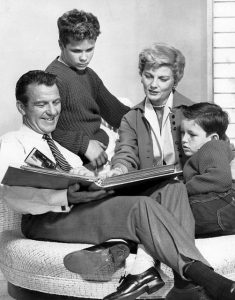
Cultural Influences on Television
In the 1950s, most television entertainment programs ignored current events and political issues. Instead, the three major networks (ABC, NBC, and CBS) developed prime-time shows that would appeal to a general family audience, particularly domestic comedies—a genre of family comedy identified by its character-based humor and usually set within the home. Seminal examples included popular 1950s shows such as Leave It to Beaver, The Donna Reed Show, and The Adventures of Ozzie and Harriet. Presenting a standardized version of the White middle-class suburban family, domestic comedies portrayed the conservative values of an idealized American life. Studiously avoiding prevalent social issues such as racial discrimination and civil rights, the shows focused on mostly White middle-class families with traditional nuclear roles (mother at home, father in the office) and always ended with a strong moral lesson, implying that most domestic problems could be resolved in 30 minutes.
Although these shows depicted an idealized version of American family life, many families in the 1950s had traditional nuclear family upbringings. Following the widespread poverty, political uncertainty, and physical separation of the war years, many Americans wanted to settle down, have children, and enjoy the peace and security that family life appeared to offer. During the booming postwar era, a period of optimism and prosperity, the traditional nuclear family experienced significant growth. However, the families and lifestyles depicted in domestic comedies did not accurately represent the overall American experience by any means. As historian Stephanie Coontz points out, “the June Cleaver or Donna Stone homemaker role was not available to the more than 40 percent of black women with small children who worked outside the home (Coontz, 1992).” Although nearly 60 percent of the U.S. population made up the middle class by the mid-1950s, 25 percent of all families and more than 50 percent of two-parent Black families were poor. Migrant workers suffered horrific deprivations, and racial tensions escalated. None of this strife appeared in the world of domestic comedies, where even the Hispanic gardener in Father Knows Best bore the name of Frank Smith (Coontz, 1992).
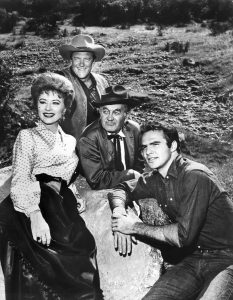
Not all programs in the 1950s shied away from tackling controversial social or political issues. In March 1954, journalist Edward R. Murrow broadcast an unflattering portrait of U.S. Senator Joseph McCarthy on his show See It Now. McCarthy, a member of the Senate Investigation Committee, had launched inquiries regarding potential Communist infiltration in U.S. institutions. Murrow thought that McCarthy’s aggressive tactics posed a possible threat to civil liberties. His portrait cast the senator from Wisconsin in an unflattering light by pointing out contradictions in his speeches. This led to such an uproar that the U.S. Senate formally reprimanded McCarthy (Friedman, 2008).
Entertainment programs also tackled controversial issues. The long-running television western Gunsmoke, which aired on CBS from 1955 to 1975, flourished in a Cold War society, where U.S. Marshal Matt Dillon (James Arness) stood up to lawlessness in defense of civilization. The characters and community in Gunsmoke confronted significant social issues, including the treatment of minority groups, the definition of family, the justification of violence, and the resilience of religious faith. During the 1960s, the show adapted to the desires of its viewing audience, becoming increasingly aware of and sympathetic to ethnic minorities, in tune with the national mood during the civil rights era.
Violence and Escapism in the 1960s
During the 1960s, television news broadcasts brought the realities of real-world events into people’s living rooms in vivid detail. The CBS Evening News with Walter Cronkite, which debuted in 1962, quickly became the country’s most popular newscast. By the end of the decade, journalist Walter Cronkite had become dubbed the most trusted man in America. Following John F. Kennedy’s election to the presidency at the beginning of the decade, the 1960s took an ominous turn. Shocked viewers tuned into Cronkite’s broadcast on November 22, 1963, to learn about the assassination of their president. During the next few days, viewers followed every aspect of the tragedy on television, from the tremor in Cronkite’s voice as he removed his glasses and announced the news of Kennedy’s death, to the frantic scenes from Dallas police headquarters where the assassin, Lee Harvey Oswald, was gunned down by nightclub owner Jack Ruby, to the thousands of mourners lining up next to the president’s flag-draped coffin.
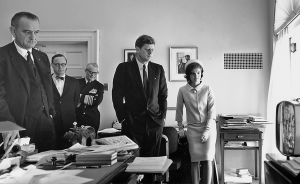
Around the same time as Kennedy’s assassination, horrific images from Vietnam streamed into people’s living rooms during the nation’s first televised war. With five camera crews on duty in the Saigon bureau, news crews captured vivid details of the war in progress. Although graphic images rarely appeared on network TV, several instances of violence reached the screen, including a CBS report in 1965 that showed Marines lighting the thatched roofs of the village of Cam Ne with Zippo lighters and an NBC news report in 1968 that aired a shot of South Vietnamese General Nguyen Ngoc Loan executing a captive on a Saigon street. Further images of children being burned and scarred by napalm and the torture of prisoners fueled the antiwar sentiments of many Americans. In addition to the devastation caused by the president’s death and the Vietnam War, Americans also felt the pressure of the Cold War—the clash between the United States and the Soviet Union in the years following World War II. This pressure escalated during periods of tension throughout the 1950s and 1960s, such as the 1962 Cuban Missile Crisis, a confrontation that caused many people to fear nuclear war.
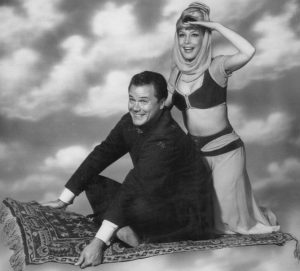
As a result of the intense stress faced by many Americans during the 1960s, broadcasters and viewers turned to escapist programs such as I Dream of Jeannie, a fantasy show about a 2,000-year-old genie who marries an astronaut, and Bewitched, a supernatural-themed show about a witch who tries to live as a suburban housewife. Both shows typified the situation comedy, or sitcom, a comedy genre featuring a recurring cast of characters who resolve zany situations based on their everyday lives. Other popular sitcoms in the 1960s included The Beverly Hillbillies, a show about a poor backwoods family who move to Beverly Hills, California, after finding oil on their land, and Gilligan’s Island, the ultimate escapist comedy about seven characters shipwrecked on an uncharted island. None of the 1960s sitcoms mentioned any of the political unease taking place in the outside world, providing audiences with a welcome diversion from real life. Other than an occasional documentary, TV programming in the 1960s consisted of a sharp dichotomy between prime-time escapist comedy and hard news.
Diversity and Politics in the 1970s
During the 1970s, broadcasters began to diversify families on their shows to reflect changing social attitudes toward formerly controversial issues such as single parenthood and divorce. Feminist groups, including the National Organization for Women (NOW), the National Women’s Political Caucus, and the Coalition of Labor Union Women, pushed for equality on issues such as pay and encouraged women to enter the workforce. In 1973, the U.S. Supreme Court sanctioned women’s right to abortion (later overturned in 2022), giving them control over their reproductive rights. Divorce rates skyrocketed during the 1970s, as states adopted no-fault divorce laws, and the change in family dynamics played out on television. Between 1972 and 1978, CBS aired the socially controversial sitcom Maude. Featuring a middle-aged feminist living with her fourth husband and divorced daughter, the show exploded the dominant values of the White middle-class domestic sitcom and its traditional gender roles. Throughout its seven-year run, Maude tackled social and political issues such as abortion, menopause, birth control, alcoholism, and depression. During its first four seasons, the show placed in the top 10 in Nielsen ratings, illustrating the changing tastes of the viewing audience, who had come of age during the era of civil rights and Vietnam protests and developed a taste for socially conscious television. Other 1970s sitcoms took the same approach, including Maude’s CBS predecessor, All in the Family, which covered issues ranging from racism and homophobia to rape and miscarriage, and The Mary Tyler Moore Show, which reflected changing attitudes toward women’s rights by featuring television’s first never-married independent career woman as the central character. Even wholesome family favorite The Brady Bunch, which ran from 1969 to 1974, featured a non-nuclear family, reflecting the rising rates of blended families in American society.
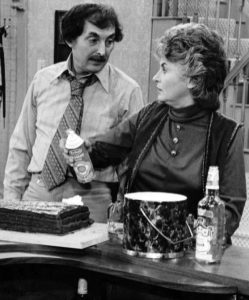
In addition to changing family dynamics on sitcoms and other prime-time shows, variety and comedy sketch shows developed a political awareness in the 1970s that reflected the growing appetite of audiences for social and political commentary. Sketch comedy show Saturday Night Live (SNL) premiered on NBC in 1975 and has remained on air ever since. Featuring a different celebrity guest host every week and relatively unknown comedy regulars, the show parodies contemporary popular culture and politics, lambasting presidential candidates and pop stars alike. Earlier NBC sketch comedy show Laugh-In, which ran from 1968 to 1973, also featured politically charged material, though it lacked the satirical bite of later series such as SNL. By the decade’s end, television broadcasting reflected a far more politically conscious and socially aware viewing audience.
The Influence of Cable Television in the 1980s
Until the mid-1980s, the top three networks (ABC, NBC, and CBS) dominated television broadcasting in the United States. However, as cable services gained popularity following the deregulation of the industry in 1984, viewers were presented with numerous options. Services such as Cable News Network (CNN), Entertainment and Sports Programming Network (ESPN), and Music Television (MTV) profoundly altered the television landscape in the world of news, sports, and music. New markets opened up for these innovative program types and older genres, such as the sitcom. During the 1980s, a revival of family sitcoms took place with two enormous hits: The Cosby Show and Family Ties. Both featured a new take on modern family life, with mothers working outside the home and fathers taking on household chores and parental duties. Despite their success on network television, sitcoms faced stiff competition from the variety of choices offered by cable. Between 1983 and 1994, weekly broadcast audience shares (a measure of the number of televisions in use tuned to a particular show) for network television dropped from 69% to 52%, while cable networks’ shares rose from 9% to 26% (Newcomb, 2004).
With a growing number of households subscribing to cable TV, concern began to grow about children’s exposure to violent content on television. In addition to regularly broadcast network programs, cable offered viewers the chance to watch films and adult-themed shows at all hours, many of which had far more violent content than regular network programming. One study found that by the time an average child left elementary school, they had witnessed 8,000 murders and more than 100,000 other acts of violence on television (Blakey, 2002). Although researchers have drawn no conclusive links between witnessing violence on television and carrying out violence in real life, the loosening boundaries regarding sexual and violent content on television remain a persistent cause for concern for many parents. For more information on the social effects of violence in the media, please refer to Chapter 2, “Media Effects”.
Specialization in the 1990s and 2000s
Although TV viewership grew during this period, the vast number of cable channels and other, newer content delivery platforms stretched the audience thin, resulting in a waning influence for network broadcasts. In recent years, broadcasters have narrowed the focus of their programming to meet the needs and interests of an increasingly fragmented audience. Entire cable channels are devoted to cooking, music, news, African American interests (see shaded box below), weather, and courtroom drama, enabling viewers to choose precisely the type of show they want to watch. Many news channels also offer coverage tailored to viewers’ political opinions. This trend toward specialization reflects a broader shift within society, as companies increasingly cater to smaller, more targeted consumer bases. Business magazine editor Chris Anderson explains, “We’re leaving the watercooler era, when most of us listened, watched, and read from the same relatively small pool of mostly hit content. And we’re entering the microculture era, when we are all into different things (Gunther, 2006).” Just as cable broadcasters cater to niche markets, Internet-based companies such as Amazon and Netflix take advantage of this concept by providing consumers with access to purchase large numbers of books, DVDs, Blu-rays, and music albums with narrow appeal, as opposed to just offering the most popular titles. Sections 9.4, “Issues and Trends in the Television Industry,” and 9.5, “Influence of New Technologies,” of this chapter will cover the recent trends and issues of this era in television.
Black Entertainment Television (BET): A Legacy of Representation and Evolution
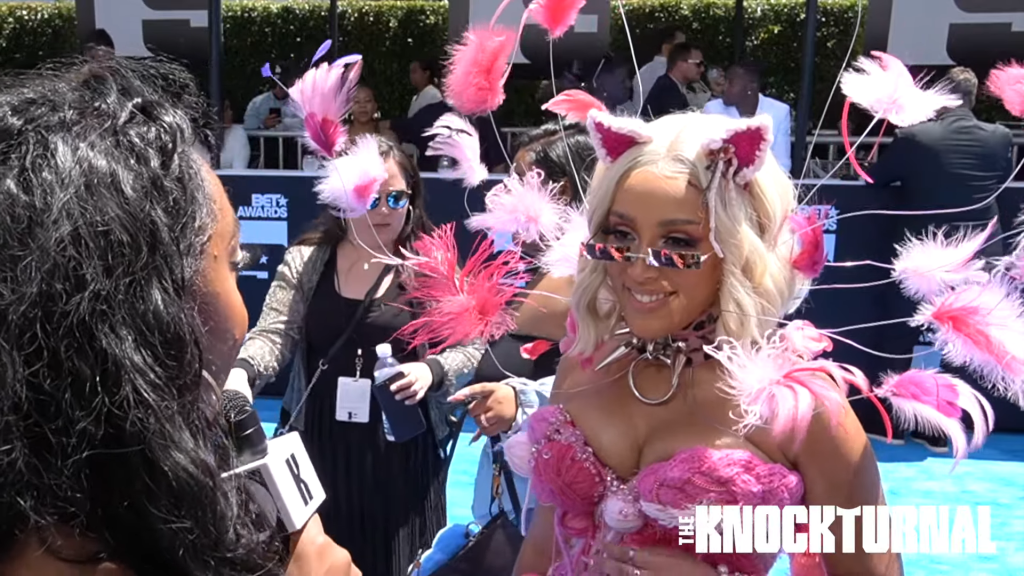
Launched on January 25, 1980, Black Entertainment Television (BET) emerged as a groundbreaking force in the media landscape, becoming the first television network specifically dedicated to African American viewers. Founded by visionary media entrepreneur Robert Johnson, BET’s initial programming primarily showcased music videos, capitalizing on the burgeoning popularity of Black artists. However, Johnson quickly recognized the broader need for diverse content tailored to the Black community, expanding the network’s offerings to include original programming, public affairs shows, and other culturally relevant content. This strategic diversification allowed Johnson to transform his initial $15,000 investment into a multimillion-dollar enterprise within a decade, demonstrating the significant untapped market for Black-centric media.
BET continued to break barriers throughout the 1990s. In 1991, it achieved a historic milestone by becoming the first Black-controlled company to be listed on the New York Stock Exchange, a testament to its financial growth and increasing influence. The network thrived, expanding its reach through additional cable channels and venturing into new areas such as film and publishing. This period solidified BET’s position as a vital platform for Black voices and stories, providing representation and entertainment that was largely absent from mainstream television.
In 2001, BET underwent a significant ownership change when it was acquired by the media conglomerate Viacom for approximately $3 billion in stock and assumed debt. Robert Johnson, through this sale, became the first Black American billionaire, marking a monumental achievement in the business world. Despite the change in ownership, BET continued to operate as a distinct brand within the Viacom (now Paramount Global) portfolio, retaining its focus on African American audiences.
In recent years, BET has continued to adapt to the rapidly evolving media landscape, expanding its reach significantly through digital platforms and streaming services. While music videos remain a component of its programming, the network has diversified its content extensively. Its current lineup features a wide array of scripted dramas (such as Tyler Perry‘s Sistas and The Oval), comedies, reality shows, and documentaries, all designed to explore and celebrate various facets of the African American experience. The launch of BET+, a premium streaming service, further underscores this strategic shift, offering an extensive library of original series, movies, and acquired titles specifically curated for Black audiences, allowing for on-demand access beyond traditional cable subscriptions.
Throughout its history, BET has played a crucial and undeniable role in promoting diversity and representation in media, providing an essential platform for Black talent, narratives, and cultural expression. However, the network has also faced persistent criticism, particularly regarding its portrayal of stereotypes, the sexualization of women in some music videos, and the inclusion of controversial content. Critics, including some of its founders, have argued that the network’s programming choices have not always lived up to its initial vision of being a comprehensive and uplifting voice for Black America. Despite these ongoing challenges and debates, BET remains a popular and influential force in the entertainment industry, continuously striving to balance its commercial objectives with its foundational mission of serving and reflecting the Black community.
Television’s Influence on Culture
Despite entering a microculture era with a variety of niche markets, television remains the most critical unifying cultural presence in the United States. During times of national crises, television news broadcasts have galvanized the country by providing real-time coverage of major events. When terrorists crashed planes into the World Trade Center towers in 2001, 24-hour TV news crews provided stunned viewers around the world with continuous updates about the attack and its aftermath. Meanwhile, network blockbusters such as Survivor and The Bachelor/Bachelorette have united viewers in shared anticipation, sparking numerous blogs, fan sites, and workplace discussions about the characters’ fates.
Televised coverage of the news has had several cultural effects since the 1950s. Providing viewers with footage of the most intense human experiences, televised news has reached people in a way that radio and newspapers cannot. The images themselves have played a significant role in shaping viewer opinion. During the coverage of the civil rights movement, for example, footage of a 1963 attack on civil rights protesters in Birmingham, Alabama, showed police blasting African American demonstrators—many of them children—with fire hoses. Coupled with images of angry White segregationist mobs squaring off against Black students, the news footage did much to sway public opinion in favor of liberal legislation such as the 1964 Civil Rights Act. Conversely, when volatile pictures of the race riots in Detroit and other cities in the late 1960s hit the airwaves, horrified viewers saw the need for a return to law and order. The footage helped create an anti-civil rights backlash that encouraged many viewers to vote for conservative Republican Richard Nixon during the 1968 presidential election.
Over the past few decades, the landscape of mass media news coverage has undergone a profound transformation, moving significantly beyond the era of ostensibly impartial, trusted voices like Walter Cronkite, who famously delivered objective reports on major events of the 1960s. Today, the television news environment is largely characterized by highly politicized coverage, particularly on prominent cable channels such as conservative Fox News and liberal MSNBC. This shift reflects a broader trend in which broadcasters are increasingly narrowing their focus to cater to specialized audiences, leading viewers to gravitate toward networks that reinforce their existing political biases.
This ideological alignment has fueled intense competition, with Fox News and MSNBC cultivating fiercely loyal fan bases. Fox News, in particular, has enjoyed sustained success, having been the most-watched cable news network since January 2002 and holding the top spot in basic cable for the last eight consecutive years (since 2016), frequently surpassing even entertainment giants like ESPN, USA, and TNT in overall viewership. Its programming, especially in prime time, often features commentators and hosts who articulate a conservative viewpoint, directly appealing to viewers who share that perspective.
On the other side of the spectrum, MSNBC has solidified its position as a dominant voice for liberal audiences, with its programming offering critical analysis of conservative policies and figures, as well as a strong emphasis on progressive social and political issues. This precise ideological positioning, much like Fox News, resonates deeply with its dedicated viewership. In contrast, CNN, which often aims for a more centrist or nonpartisan approach, has frequently struggled in the ratings wars against its more ideologically aligned competitors, usually trailing both Fox News and MSNBC in key viewership metrics.
Critics widely contend that the rise of partisan news networks significantly contributes to political polarization. When viewers primarily consume news that aligns with their existing beliefs, they are exposed to a less nuanced understanding of opposing political opinions, reinforcing echo chambers and making genuine dialogue across ideological divides more challenging. For instance, in the aftermath of the 2020 U.S. presidential election and the January 6th Capitol attack, the framing and emphasis of events varied dramatically across these networks, illustrating how partisan lenses can shape public perception and deepen societal divisions. The Dominion Voting Systems defamation lawsuit against Fox News, settled in 2023, further highlighted the legal and reputational consequences that can arise from the dissemination of ideologically driven, unverified claims.
The Enduring Influence of Late-Night: Saturday Night Live and Talk Shows
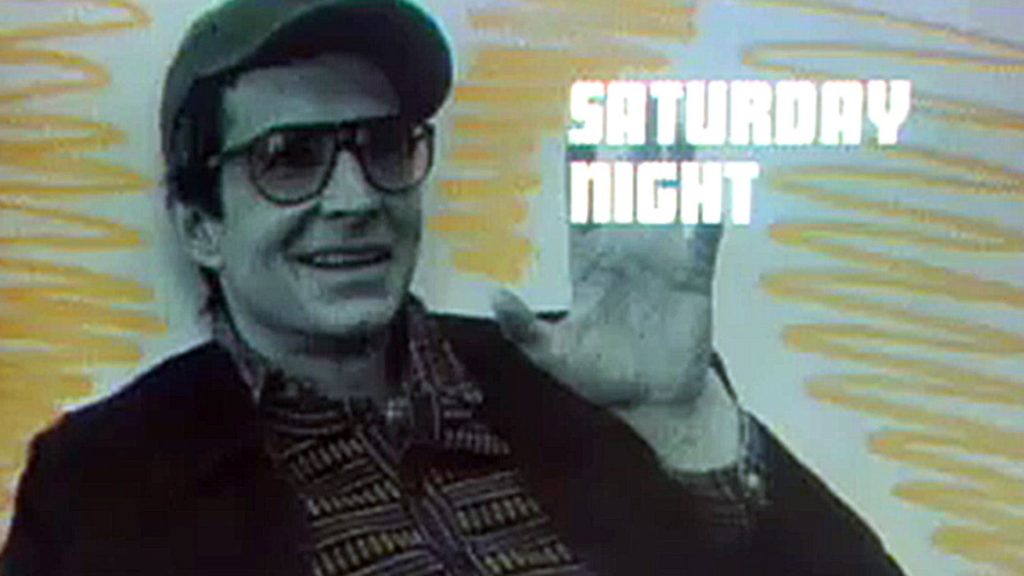
Amidst the seismic shifts brought by streaming, certain television institutions have not only survived but thrived by adapting their unique blend of comedy, commentary, and cultural relevance. Chief among these are Saturday Night Live (SNL) and the venerable late-night talk shows, which have collectively shaped American humor, politics, and pop culture for decades.
Saturday Night Live, which premiered on NBC in October 1975, immediately distinguished itself with its live, irreverent, and often counter-cultural sketch comedy. Born out of a desire to appeal to a younger demographic, SNL‘s “Not Ready for Prime Time Players,” including John Belushi, Gilda Radner, Dan Aykroyd, and Chevy Chase, quickly became household names. The show’s format—a weekly rotation of celebrity hosts, musical guests, and a satirical “Weekend Update” news segment—provided a dynamic platform for both established and emerging talent. From its inception, SNL has become a crucial barometer of the cultural zeitgeist, fearlessly lampooning political figures (e.g., Chevy Chase’s bumbling portrayal of Gerald Ford, Tina Fey‘s uncanny impression of Sarah Palin, Alec Baldwin‘s divisive portrayal of Donald Trump) and societal trends. Its ability to produce sketches that instantly permeated the national lexicon (e.g., “More Cowbell!“, “Debbie Downer“) solidified its status as a cultural institution, influencing fashion, catchphrases, and even political discourse. Over its nearly 50-year run, SNL has seen cycles of critical acclaim and creative challenges, but its consistent presence and capacity to launch comedic superstars (Eddie Murphy, Will Ferrell, Kristen Wiig, Kate McKinnon, among many others) underscore its enduring importance.
Parallel to SNL’s dominance in sketch comedy, late-night talk shows have evolved from genial, interview-driven programs into multifaceted cultural touchstones. Pioneered by figures such as Steve Allen and Jack Paar, the format was refined by Johnny Carson, who hosted The Tonight Show for 30 years (1962-1992). Carson’s blend of witty monologues, celebrity interviews, and recurring characters made his show a nightly ritual for millions, often setting the national agenda for watercooler conversations the next day. His influence extended to launching the careers of countless comedians, who famously hoped for “the call” to the couch after a successful stand-up set.
In the post-Carson era, late-night diversified, with hosts like David Letterman, Jay Leno, Conan O’Brien, and later Stephen Colbert, Jimmy Fallon, Jimmy Kimmel, Trevor Noah, and Seth Meyers, each bringing their distinct comedic voices and approaches. This new generation of hosts adopted a more politically charged sense of humor, particularly in response to major national and global events. They transformed the monologue into a sharper, more analytical, yet still comedic, take on the day’s headlines. Furthermore, these shows adeptly leveraged the rise of digital platforms. While still broadcast linearly, their most impactful segments—viral monologues, celebrity games, and political skits—often find a second, massive life on YouTube and social media, reaching audiences far beyond their traditional broadcast slots. This digital extension has allowed late-night to remain highly relevant, shaping online conversations and continuing to serve as a vital space for comedy, social commentary, and cultural reflection in an increasingly fragmented media landscape. Both SNL and late-night talk shows demonstrate that, even as the act of “watching television” evolves, the demand for timely, engaging, and culturally resonant content remains as strong as ever.
Social Controversy
The issue of whether television producers have a responsibility to promote particular social values continues to generate heated discussion. When the unmarried title character in the CBS series Murphy Brown—a comedy show about a divorced anchorwoman—got pregnant and chose to have the baby without any involvement from the father, Vice President Dan Quayle referenced the show as an example of degenerating family values. Linking the 1992 Los Angeles riots to a breakdown of family structure and social order, Quayle lambasted producers’ poor judgment, saying, “It doesn’t help matters when prime-time TV has Murphy Brown, a character who supposedly epitomizes today’s intelligent, highly paid professional woman, mocking the importance of fathers by bearing a child alone, and calling it just another ‘lifestyle choice (Time, 1992).’” Quayle’s outburst sparked a lively debate between supporters and opponents of his viewpoint, with some praising his outspoken social commentary and others dismissing him as out of touch with America and its growing number of single mothers.
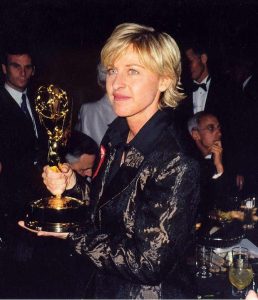
A similar controversy arose with the portrayal of openly gay characters on prime-time television shows. When the lead character on the ABC sitcom Ellen came out in 1997 (two weeks after Ellen DeGeneres, the actress who played the role, announced that she was gay), she became the first leading gay character on both broadcast and cable networks. The show turned into a test case for the nation’s tolerance of openly gay characters on prime-time TV and prompted much debate. Embraced by liberal supporters and lambasted by conservative objectors (evangelical Baptist minister Jerry Falwell infamously dubbed her “Ellen DeGenerate”), both the actress and the show furthered the quest to make homosexuality acceptable to mainstream audiences. Although ABC canceled Ellen the following year (amid disagreements with producers about whether it should contain a parental advisory warning), DeGeneres successfully returned to television in 2003 with her talk show. Subsequent shows with prominent gay characters quickly followed in Ellen’s footsteps. According to the Gay & Lesbian Alliance Against Defamation’s (GLAAD) Where We Are on TV Report 2023–2024, 39 of the 454 (or 8.6%) series regulars on scripted primetime broadcast series identified as LGBTQ, representing a 2% decrease from the previous year.
The debate over television’s role in shaping social values continues to generate heated discussion, moving beyond historical narratives to encompass the evolving content and influence of both traditional broadcast and cable networks. While the Murphy Brown and Ellen controversies highlighted network television’s direct impact on public discourse, today’s discussions also center on how television content, including news, entertainment, and documentaries, affects issues such as mental health, political discourse, and the spread of misinformation. The pervasive nature of television means that controversies can still ignite and spread rapidly, presenting ongoing challenges for producers and broadcasters in managing their societal impact.
One significant modern problem, particularly within the realm of television news, is the continued proliferation of misinformation and disinformation, especially concerning public health and political events. While social media platforms amplify these narratives, cable news channels remain central to their dissemination and framing. For instance, during the COVID-19 pandemic (2020-2022), various television news outlets faced scrutiny for their selective reporting or amplification of unverified claims about the virus, vaccines, and treatments. Similarly, leading up to and following primary elections, such as the 2020 U.S. Presidential Election, partisan news channels were criticized for their role in promoting conspiracy theories and election-related falsehoods. The “Stop the Steal” movement and the January 6th Capitol attack demonstrated the real-world consequences fueled by television-amplified narratives. This has led to ongoing debates about the responsibility of news broadcasters, content moderation, and the balance between journalistic freedom and societal impact.
Beyond news, other forms of television content, including scripted dramas, reality shows, and documentaries on both traditional networks and streaming services, continue to generate social controversy. These discussions often revolve around the impact of content on sensitive social issues and the ethics of portrayal. For example, particular reality television series, such as The Bachelor franchise or The Real Housewives series, have faced backlash for allegedly promoting harmful stereotypes, manipulating storylines, or exploiting participants for entertainment by fostering dramatic and sometimes toxic environments. Scripted dramas or docuseries that tackle sensitive subjects, while aiming for authenticity, can also spark debates about their influence on public perception or their handling of traumatic themes. A prominent example is Netflix’s 2022 series Dahmer – Monster: The Jeffrey Dahmer Story, which faced significant criticism for allegedly romanticizing a serial killer and re-traumatizing victims’ families through its graphic portrayals without their consent. These controversies underscore the ongoing challenge for television producers to strike a balance between creative freedom and their broad societal influence in an increasingly interconnected media landscape.
Creating Stars via Reality Television
Stemming from the 1948 TV series Candid Camera, in which secretly filmed people responded to elaborate practical jokes, reality television aimed to capture real, unscripted life on camera. The genre developed in several different directions, from home video clip shows (America’s Funniest Home Videos, America’s Funniest People) to true-crime reenactment shows (America’s Most Wanted, Unsolved Mysteries) to thematic shows based on professions of interest (Project Runway, Police Women of Broward County, Top Chef). Near the turn of the millennium, the genre began to lean toward more voyeuristic shows, such as MTV’s The Real World, an unscripted “documentary” that followed the lives of seven strangers selected to live together in a large house or apartment in a major city. The show drew criticism for glamorizing bad behavior and encouraging excessive drinking and casual sex. However, its ratings soared with each successive controversy (a trend that critics claim encouraged producers to actively stage rating-grabbing scenarios).
During the late 1990s and 2000s, a wave of copycat reality TV shows emerged, including the voyeuristic series Big Brother, which filmed a group of strangers living together in an isolated house full of cameras in an attempt to win large amounts of cash, and Survivor, a game show in which participants competed against each other by performing endurance challenges on an uninhabited island. Survivor’s success as the most popular show on television in the summer of 2000 ensured the continued growth of the reality television genre, and producers turned their attention to reality dating shows such as The Bachelor, Temptation Island, and Dating in the Dark. Cheap to produce, with a seemingly endless supply of willing contestants and eager advertising sponsors, reality TV shows continue to draw big ratings.

Reality TV has created the cultural phenomenon of the instant celebrity. Famous for simply appearing on the air, reality show contestants often extend their 15 minutes in the spotlight. Kate Gosselin, star of Jon & Kate Plus 8, a cable TV show about a couple with eight children, has since appeared in numerous magazine articles. In 2010, she starred on the celebrity reality dance show Dancing with the Stars. Survivor contestant Elisabeth Hasselbeck became a co-host on TV talk show The View, and several American Idol contestants (including Kelly Clarkson, Carrie Underwood, and Adam Lambert) have become household names. In the 2000s, this landscape has undergone a dramatic evolution; the genre has seen an explosion of social media integration, with shows and their stars now actively leveraging platforms like Instagram and TikTok to extend narratives and build personal brands, blurring the line between reality TV stars and social media influencers. This shift has led to a diversification of subgenres, moving beyond traditional competition and docu-soap formats to include specialized lifestyle shows, such as Netflix’s Selling Sunset, and social experiments, like Love Is Blind, often produced directly for streaming platforms like Hulu or Max.
Despite its continued popularity and evolution, the genre has consistently drawn criticism for creating a generation that expects to achieve instant wealth without having to try very hard and also for preying on vulnerable people whom critics call “disposable.” When Britain’s Got Talent star Susan Boyle suffered emotional distress in 2009 after the stress of transitioning from obscurity to stardom in an extremely short period, the media began to point out the dangers of reality television. In 2009, TheWrap.com investigated the current lives of former stars of reality shows such as The Contender, Paradise Hotel, Wife Swap, and Extreme Makeover, reporting that at least 11 participants had committed suicide in tragedies that appeared to be linked to their experiences on screen (Adams, 2009; Feldlinger, 2009).
The History and Impact of Keeping Up with the Kardashians
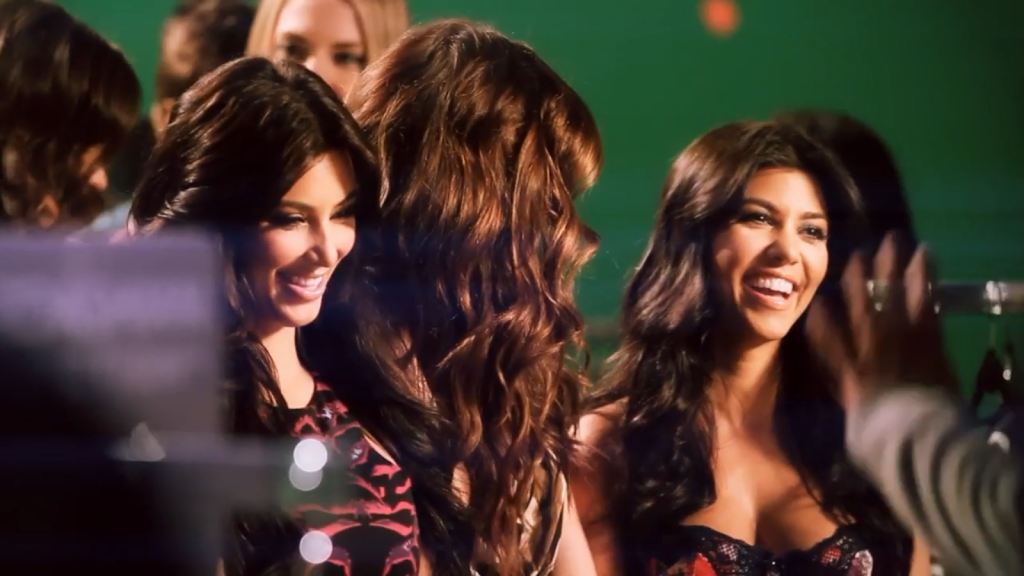
Keeping Up with the Kardashians (KUWTK) premiered on E! on October 14, 2007, and quickly became a cultural phenomenon, running for 20 seasons over nearly 14 years before concluding on June 20, 2021. The reality series centered on the personal and professional lives of the blended Kardashian-Jenner family, primarily focusing on sisters Kourtney, Kim, and Khloé Kardashian, as well as their half-sisters, Kendall and Kylie Jenner, along with their parents, Kris Jenner (formerly Kris Kardashian) and Caitlyn Jenner (formerly Bruce Jenner), and brother Rob Kardashian.
The show’s genesis is often attributed to matriarch Kris Jenner, who, inspired by the success of The Osbournes, approached producer Ryan Seacrest with the idea of a reality show about her family. While the family gained some public recognition due to Robert Kardashian Sr.’s involvement in the O.J. Simpson trial and Kim Kardashian’s earlier work as a stylist, as well as a leaked sex tape, KUWTK propelled them to unprecedented global stardom. The series offered an unfiltered, albeit often criticized as fabricated, look into their lavish yet relatable lives, showcasing everything from everyday domestic squabbles to major life events, such as marriages, divorces, births, and transitions.
The impact of KUWTK on popular culture is undeniable and multifaceted. It revolutionized the concept of celebrity, ushering in an era where individuals could be “famous for being famous” and leverage their personal lives into massive business empires. The show served as a powerful marketing platform, directly contributing to the success of numerous spin-off series and the family’s ventures, including fashion lines, beauty brands, and social media endorsements. The Kardashians effectively pioneered modern influencer culture, demonstrating how personal branding and direct engagement with fans could translate into immense wealth and influence.
Beyond its business implications, KUWTK also played a significant role in shaping societal conversations. The show brought topics like gender transition (with Caitlyn Jenner’s journey), mental health (through Kanye West’s public struggles), and criminal justice reform (Kim Kardashian’s advocacy) into mainstream discourse. While often criticized for promoting unrealistic beauty standards and consumerism, the series also showcased strong family bonds and the complexities of modern relationships, making the family both aspirational and oddly relatable to millions worldwide. Its legacy lies in its unprecedented ability to transform private lives into public spectacle, forever altering the landscape of reality television and celebrity.

